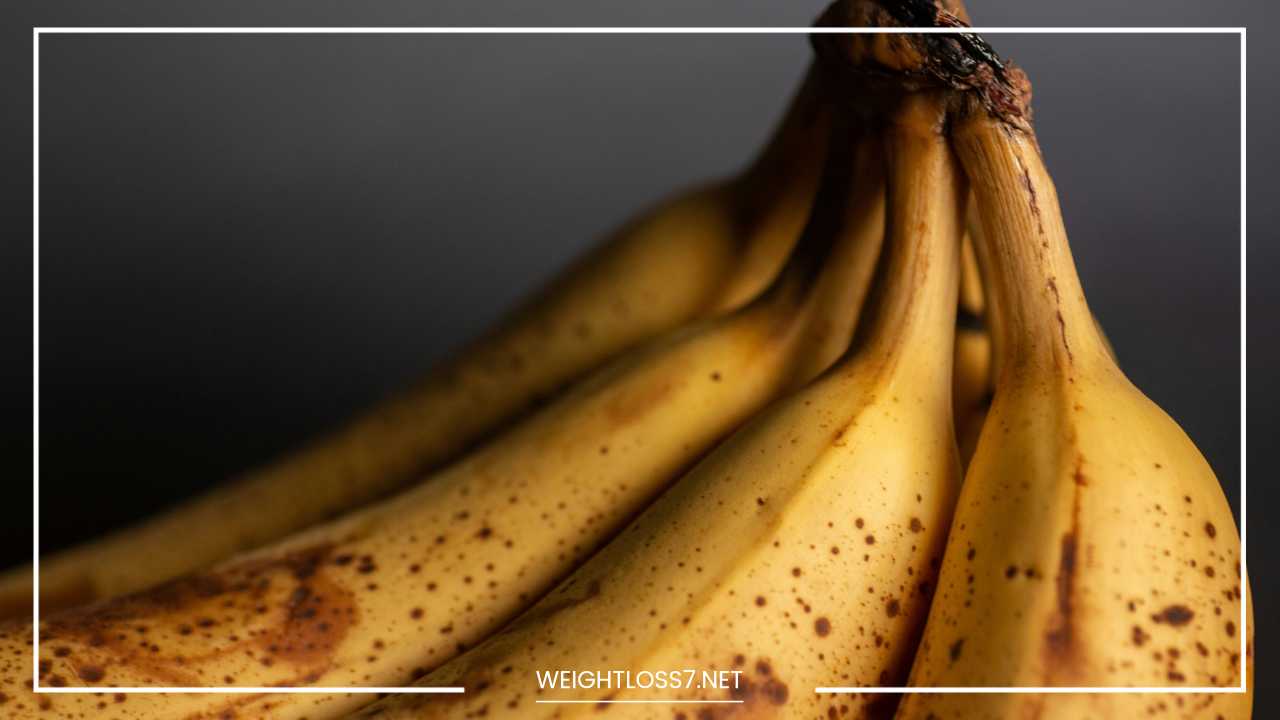Spoiled Food? Don’t Get Stinked! How to Tell & Prevent It

Spoiled Food
The Big Stink: A Deep Dive into Spoiled Food, Keeping Your Kitchen Safe, and Fighting Global Waste
The pungent aroma that wafts from a forgotten container in the back of the fridge. The sight of fuzzy mold creeping across a forgotten loaf of bread.
We’ve all encountered spoiled food at some point, and the experience is universally unpleasant. But beyond the initial sensory offense, understanding spoilage is crucial for safeguarding our health and minimizing global food waste.
This deep dive explores the science behind food spoilage, equips you with the skills to identify gone-bad groceries, and offers practical strategies to extend shelf life and minimize waste in your kitchen.
We’ll also delve into the broader impact of spoilage and explore ways we can collectively combat this global issue.
The Spoilage Symphony: A Chorus of Microbes
Food spoilage is a complex process orchestrated by a diverse cast of microorganisms, primarily bacteria, mold, and yeast. These tiny organisms are constantly present in our environment, and when they come into contact with food, they find a buffet of readily available nutrients.
Their growth and reproduction lead to the breakdown of food components, altering its texture, flavor, and aroma.
Several factors influence the rate and type of spoilage:
-
Temperature: Microbes thrive in warm environments. Refrigeration slows down their growth significantly, while freezing halts it almost entirely. Leaving cooked meats out at room temperature for extended periods creates a prime breeding ground for harmful bacteria like Staphylococcus aureus, which can cause foodborne illness.
-
Moisture Content: Most microbes require moisture for growth. This is why dry goods like flour or pasta have a longer shelf life compared to fresh produce with a high water content. Fruits and vegetables stored in perforated plastic bags trap moisture and accelerate spoilage.
-
Oxygen: Some microbes, like aerobic bacteria, require oxygen for activity. Others, like anaerobic bacteria, can thrive in oxygen-depleted environments. Packaging methods that limit oxygen exposure, like vacuum sealing, can significantly extend shelf life.
-
Acidity: Highly acidic foods like pickles or citrus fruits create an inhospitable environment for some bacteria. The natural acidity in these foods helps inhibit their growth.
-
Enzymes: These naturally occurring catalysts in food can also contribute to spoilage. Enzymes break down food components, leading to changes in texture and flavor. Blanching vegetables before freezing helps inactivate enzymes, slowing down this process.
The Spoilage Detectives: Unveiling the Signs of a Fallen Comrade
While “use by” and “best before” dates offer a general guideline, they aren’t foolproof. Here’s how to utilize your senses to become a spoilage detective and identify potentially hazardous food:
-
Sight: Look for visual cues like discoloration, mold growth, or an abnormal amount of slime. Fresh meat should have a vibrant red color (beef) or a pinkish hue (pork/chicken). Fish should have clear eyes and bright red gills. Mold growth on fruits, vegetables, or bread is a clear giveaway.
-
Smell: Spoiled food often develops a sour, off-putting odor. Trust your nose! A pungent, ammonia-like smell from ground meat indicates spoilage due to bacterial growth.
-
Touch: Fresh produce should be firm with a slight give. Wilted or mushy fruits and vegetables are past their prime. Slimy textures are another red flag.
-
Taste: This should be a last resort, but if something tastes off or funky, don’t eat it!
The Spoiled Food Dilemma: To Toss or Not to Toss?
The golden rule: When in doubt, throw it out! Foodborne illness caused by consuming spoiled food can lead to unpleasant symptoms like vomiting, diarrhea, and fever. It’s simply not worth the risk.
However, for certain items, you might be able to salvage a portion. For instance, you can cut away moldy spots on hard cheeses as long as the mold hasn’t reached the core.
With fruits and vegetables, you might be able to remove spoiled sections and enjoy the rest. Use your judgment, but prioritize safety over saving a few bites.
Fortress Kitchen: Building a Defense Against Spoilage
By adopting these simple storage and handling practices, you can minimize spoilage and extend the shelf life of your groceries:
-
Proper Storage: Follow the storage recommendations on food labels. Generally, refrigerate raw meat, poultry, fish, dairy products, and some fruits and vegetables. Store pantry items in cool, dry, and dark places. Leaving heat-sensitive foods at room temperature creates an invitation for spoilage.
-
First In, First Out (FIFO): Prioritize using older items before opening new ones. This helps prevent food from lingering in the fridge or pantry and ensures a constant rotation of stock.
-
Portion Control: Cook only what you need to avoid leftovers sitting in the fridge for extended periods. Leftovers are more prone to spoilage, especially if not stored properly.
-
Embrace Airtight Containers: Transfer opened packages to airtight containers to minimize exposure to air and moisture. Oxygen exposure can accelerate the growth of aerobic bacteria and drying out of food.
-
Cleanliness is Key: Regularly clean your refrigerator and pantry to prevent the growth of bacteria. Spills and crumbs can attract microbes and create a breeding ground for spoilage. Consider wiping down shelves and drawers with a disinfectant solution every few weeks.
Beyond the Kitchen: The Global Impact of Food Spoilage
The issue of spoiled food extends far beyond our individual refrigerators. According to the UN Food and Agriculture Organization, a staggering one-third of the food produced globally is lost or wasted each year. This translates to a colossal economic loss, estimated at around $2.6 trillion annually.
The environmental impact is equally concerning. Food waste contributes significantly to greenhouse gas emissions, as decomposing food in landfills releases methane, a potent greenhouse gas with 25 times the heat-trapping capacity of carbon dioxide.
Fighting Food Waste: A Collective Responsibility
While the tips mentioned earlier focus on minimizing spoilage in your own kitchen, we can collectively contribute to a more sustainable food system by addressing food waste on a larger scale. Here’s what you can do:
-
Plan Your Meals: Plan your meals for the week and create a grocery list based on your needs. This helps avoid impulse purchases and reduces the risk of food expiring before you use it.
-
Shop Smart: Buy only what you need and consider buying in bulk only for shelf-stable items like dry grains or canned goods. Resist the temptation to overstock, especially on perishable items.
-
Embrace Proper Storage Techniques: Apply the storage tips mentioned earlier throughout the supply chain – from farms to grocery stores to your home. Proper storage practices at every stage can significantly reduce food waste.
-
Get Creative with Leftovers: Get creative with leftovers! Repurpose them into new dishes or freeze them for future use. Leftover cooked chicken can be transformed into a pot pie or chicken salad, while wilting vegetables can be revived in a stir-fry.
-
Compost Food Scraps: Food scraps that can’t be saved can be composted. Composting transforms food waste into nutrient-rich fertilizer that can be used to nourish your garden. This not only reduces waste but also creates a valuable resource for growing your own food.
How to Know if Food is Spoiled
Sight:
- Look for discoloration beyond what’s natural. For example, browning ground beef is fine, but slimy green ground beef is not.
- Mold growth is a clear giveaway. Even a small amount indicates spoilage.
- Leaking or bulging packages could signify bacterial growth and should be discarded.
- Excessive slime on fruits, vegetables, or meats is a red flag.
Smell:
- Trust your nose! Spoiled food often develops a sour, off-putting odor.
- A pungent, ammonia-like smell from meat indicates spoilage.
- A yeasty smell on dairy products suggests spoilage by yeasts.
Touch:
- Fresh produce should be firm with a slight give. Wilted or mushy fruits and vegetables are past their prime.
- Slimy textures on any food are a sign of spoilage.
Taste:
- This should be a last resort. If something tastes funky or off, don’t eat it!
Remember: When in doubt, throw it out! Foodborne illness is not worth the risk.
How to Identify Spoiled Food Specific to Different Food Categories:
Fruits and Vegetables:
- Discoloration: While some browning is natural (like bananas or avocados), excessive browning, mushy spots, or leaking juices indicate spoilage.
- Mold: Any mold growth is a no-go. Discard the entire fruit or vegetable, as mold spores can travel and contaminate other items.
- Texture: Wilted, mushy, or slimy fruits and vegetables are past their prime. Fresh produce should have a slight give when pressed gently.
- Smell: A sour or fermented odor indicates spoilage. Fresh fruits and vegetables should have a pleasant, neutral aroma.
Meat, Poultry, and Seafood:
- Color: Fresh meat should have a vibrant red color (beef) or a pinkish hue (pork/chicken). Spoiled meat will turn grayish-brown or develop green or slimy patches.
- Odor: A pungent, ammonia-like smell is a clear sign of spoilage. Fresh meat should have a mild, meaty aroma.
- Texture: Fresh meat should be firm to the touch. Spoiled meat will feel sticky or slimy.
- Package Integrity: Leaking packages or bulging casings could indicate bacterial growth and should be discarded.
Dairy Products:
- Mold: Mold on cheese or yogurt is a definite sign of spoilage. You can cut away mold on hard cheeses as long as the mold hasn’t reached the core. Discard soft cheeses and yogurt with any mold growth.
- Sour Smell: Dairy products should have a slightly sweet or pleasant aroma. A sour or off-putting smell indicates spoilage caused by bacterial growth.
- Texture: Lumpy or curdled milk, yogurt, or sour cream is spoiled. Fresh dairy products should have a smooth and even consistency.
- Bloated Packaging: Bulging or leaking packages of milk, yogurt, or cottage cheese could indicate bacterial growth and should be discarded.
Eggs:
- The Float Test: Fill a bowl with cool water and gently place the egg in it. Fresh eggs will sink to the bottom, while spoiled eggs will float due to air buildup inside. This is not a foolproof method, but it’s a good starting point.
- Cracked Shells: Discard any eggs with cracked or broken shells, as bacteria can easily enter through the cracks.
- Odor: Sniff the egg after cracking it open. Fresh eggs should have a mild, neutral odor. A strong, unpleasant odor indicates spoilage.
Remember: If you’re unsure about the safety of any food item, it’s always better to err on the side of caution and throw it out.
Final Word: A Spoilage-Free Future Starts Now
By understanding the science behind food spoilage, becoming a keen observer of your groceries, and adopting smart food storage and handling practices, we can significantly reduce food waste in our kitchens.
Beyond this, advocating for better food storage infrastructure and supporting initiatives that combat food waste on a larger scale are crucial steps towards a more sustainable food system.
Remember, every little bit counts. By taking action, we can prevent perfectly good food from going to waste, safeguard our health, and contribute to a healthier planet for ourselves and future generations.
So, the next time you reach for that carton of milk, take a moment to appreciate the journey it took to get there. By treating food with respect and minimizing spoilage, we can ensure a future where everyone has access to safe and nutritious food.

















